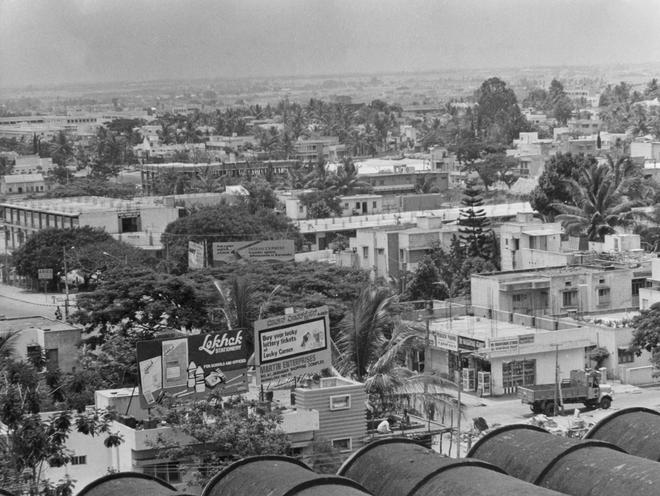Jayanagar, one of the few extensions that stands out for retaining its heritage and aesthetics withstanding development explosion in the city and the largest planned layout in Asia when it was carved out in 1948, celebrated its 75th year on Sunday.
Jayanagar, which was one of the largest layouts formed post Independence, continued the tradition of urban planning, inculcated during the formation of Basavanagudi and Malleswaram, post the Bengaluru plague of 1890s.
Formation
The Ashoka pillar that marks the beginning of Jayanagar was built in a record 10 days at a cost of ₹3,000, said Suresh Moona, a city-based amateur historian. The pillar is now a landmark for the entire city.
The unveiling of the pillar on August 20, 1948, by then Governor-General of India C. Rajagopalachari, also marked the inauguration of the Jayanagar extension that has 10 blocks. The extension was built by R. Madhavan, then Chief Engineer of the City Improvement Trust Board (CITB). The Madhavan park was named in honour of the same engineer.
Architect Naresh Narasimhan said the design for the extension was prepared by German architect Otto Koenigsberger, who was Chief Architect and Planner of State of Mysore in the mid 1940s.
Although the extension was formed two years after independence, the area witnessed a swift growth after the BDA built a commercial complex in 1976.
The layout had a geographical advantage of having two arterial roads - Bannerghatta Road and Kanakapura Road - on either side. This ensures most of the through traffic doesn’t enter the area, which has helped it to retain its charm, Mr. Narasimhan said.
A cluster of villages that became Jayanagar:
Jayanagar was once a cluster of villages - Siddapur, Yediyur, Thayappanahalli, Bairasandra, Karisandra, Kattapalya, Ragigudda, and parts of Sarakki and Lakkasandra.
On an appeal by residents of Thayappanahalli village, who were upset that the identity of their village was being wiped out by the layout, a block was named after the village - Jayanagar 4T Block.
Transport Minister Ramalinga Reddy, who has represented Jayanagar Assembly constituency four times from 1989 to 2008, said the planned nature of the layout, segregating residential and commercial uses, has helped check unscrupulous development.

Historically, Jayanagar had a mix of people cutting across religions and the same has continued even to this day, Mr. Reddy said.
Development that did not ruin the vibe of the layout
The iconic BDA complex in Jayanagar 4th block that was built when D. Devaraj Urs was Chief Minister, laid the foundation for economic boom in the otherwise quiet residential settlement with wide roads, lakes, and parks. It’s this complex which thrives even today that brought development and traffic to the extension.
In 2008, the complex caught fire after which it went through a revamp. However, a new multi-storey complex built by the BDA has no takers. Over a period, malls, restaurants, and pubs have come up but owing to the width of the roads, traffic has never been a major issue here, although now 11th Cross witnesses traffic snarls.
Sudarshan Yadav, a resident of Jayanagar, said that compared to other parts of the city, Jayanagar, though it has seen massive development, remained scenic. Over the years, it has acquired new spots.
“The area has many jewellery and wedding clothes stores and people from the city and other States come here to shop for weddings,” Mr. Yadav said. From the 1980s to 2023, the area has seen a sustainable transformation because people here did not allow unscrupulous development, he added.
Lavanya S., a young resident, said that though her father was not happy with malls and pubs popping up in the area, for youngsters like her Jayanagar had donned a modern look with traditional aesthetics. “The city has to evolve and at the same it should not lose its originality,” she said.







